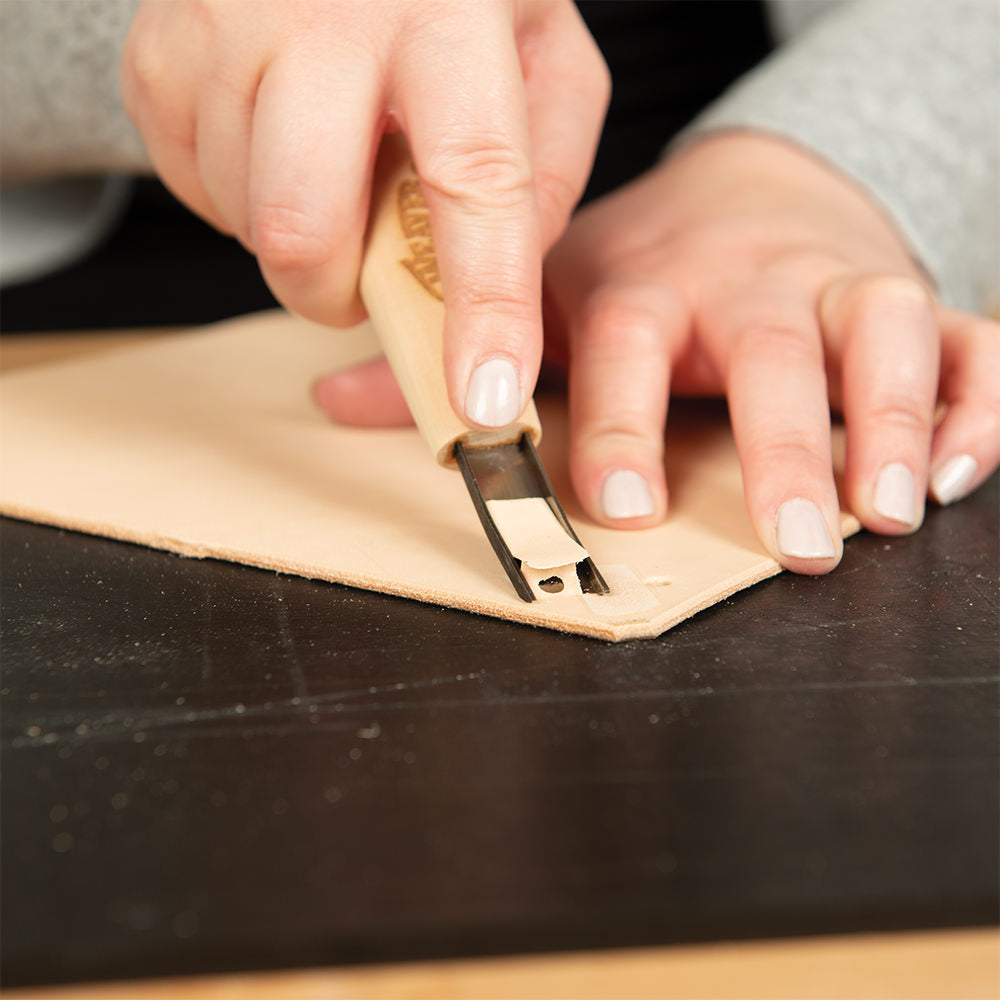Vegetable Tanned Leather: A Look at its History and Why Makers Still Love It Today

If you've ever worked with leather that ages beautifully, taking on a gorgeous patina with every use, chances are it was vegetable tanned. Also known as veg tanned leather, this time-honored material has been around for thousands of years and still remains a favorite for good reason.
To help you decide if vegetable tanned leather is right for your next project, let's take a closer look at what makes vegetable tanned leather special, where it comes from, and why it continues to be the top choice for many leatherworkers.
What Is Vegetable Tanned Leather?

In the simplest terms, vegetable tanned leather is made using natural tannins including plant-based compounds found in trees like oak, chestnut, mimosa, and quebracho. These tannins transform raw animal hides into strong, long-lasting leather.
You may be wondering what sets veg tanned leather apart from other popular options like chrome tanned leather. The veg tanning process takes time (think weeks, not days), but the results are totally worth it. With beautiful color, incredible durability, and that signature patina that tells a story as it ages, veg tanned leather stands the test of time and looks good while doing it!
Weaver Leather Supply has a wide selection of vegetable tanned leather for sale including hides from industry leading tanneries like Hermann Oak® and CHAHINLEATHER®. Perfect for carving, tooling, stamping, embossing or molding, veg tanned leather is the perfect canvas for showcasing your artistry.
A Brief History of Vegetable Tanning

Ancient Beginnings
The origins of vegetable tanning can be traced as far back as 6000 BC when early civilizations like the Sumerians began experimenting with ways to preserve animal hides using natural materials. This early innovation helped create weather-resistant, long-lasting leather for clothing, shelter, tools, and armor.
Egyptian and Roman Refinement
Civilizations including the Egyptians, Babylonians, and Romans significantly advanced tanning methods. The Romans, in particular, standardized leather production, with Tuscany becoming a key region for veg tanning—a legacy that continues today.
As seen in traditional Tuscan tanneries, artisans have passed down tanning knowledge for generations, creating a leather that’s not only functional but also deeply cultural.
Industrial Shift and Chrome Tanning
Vegetable tanning remained the dominant method for centuries until the mid-19th century when chrome tanning emerged. This new method reduced production time from weeks to just a day, lowering costs and appealing to mass manufacturing needs.
Today, chrome tanning accounts for roughly 90% of all leather production. While it's quicker and cheaper to chrome tan a leather hide, many prefer the organic beauty, longevity, and versatility of veg tanned leather.
Why Makers Still Choose Veg Tanned Leather

Despite chrome tanning's popularity, many leatherworkers keep coming back to veg tan and it's easy to understand why.
1. Durability Lasts for Generations
This stuff is built to last. Veg tanned leather holds up beautifully over time and develops a rich patina or a natural shine and depth of color that comes from everyday use. You'll discover no two pieces age exactly the same, which gives every project a unique look that reflects its journey.
2. It's a Maker's Dream
Whether you're stamping, tooling, molding, or dyeing, veg tan leather gives you full creative control. It holds its shape and detail so well, making it perfect for projects like belts, wallets, armor, holsters and more!
3. Natural and Sustainable
Because it uses organic tannins, vegetable tanning is more eco-friendly than chrome tanning. Many tanneries adhere to strict sustainability standards and use hides only from animals raised for food, ensuring nothing goes to waste.
Exploring the Veg Tanning Process

Creating vegetable tanned leather isn't fast but that's part of what makes it so special. Here's a simplified version of what happens:
- Soaking - The raw hides are rehydrated and cleaned.
- Liming & Dehairing - Hair and fats are removed to prep the hide.
- Drum Tanning - Hides are tumbled with natural tannins in wooden drums for several weeks.
- Fatliquoring - Oils and waxes are added to adjust softness, strength, and color.
- Drying - Hides dry slowly in a controlled environment to maintain quality.
- Finishing Touches - Technicians inspect, trim, dye, and finish the leather by hand.
The result? A one-of-a-kind material with warmth, texture, and a unique journey from start to finish.
What Can You Make with Veg Tanned Leather?

The better question might be: What can’t you make?
Veg tanned leather is incredibly versatile. Makers use it for:
- Tooled and carved designs
- Molded masks or armor
- Custom belts and holsters
- Wallets, watchbands, and other small goods
Thanks to its ability to take dye and finishes, you can get everything from deep browns and blacks to lighter, natural tones. Want to save time and eliminate the need to dye it yourself?
Weaver Leather Supply offers English bridle and dyed veg tanned options that deliver rich color so you’ll be ready to dive into your next project.
Bonus: Veg tan leather comes in a wide range of thicknesses to accommodate everything from lightweight linings to heavyweight saddles. You’ll find the right thickness to suit nearly any project.
Why It's More Than Just Leather

Vegetable tanned leather is more than a material. It's part of a legacy. It connects modern makers with tanning methods that are thousands of years old. Whether you're just learning the art of tooling, adding finishing touches to a belt, or making a detailed holster, using veg tanned leather means you're following in the footsteps of all the artisans who have come before you. As timeless as it is beautiful, veg tanned leather never goes out of style.
If you're looking for leather that gets better with age, welcomes your creativity, and holds strong for years to come, veg tan might be exactly what you need.








